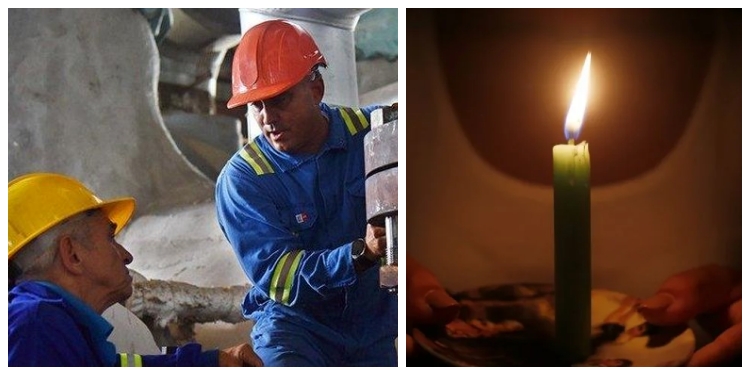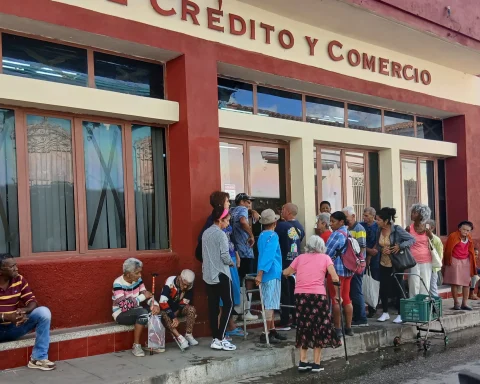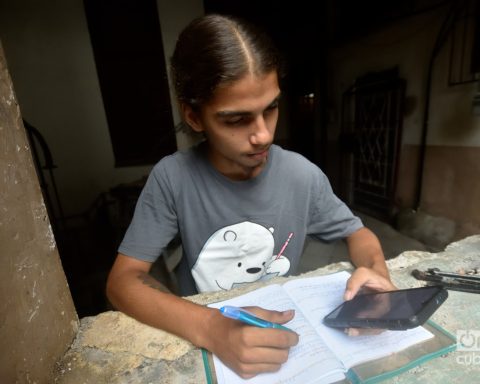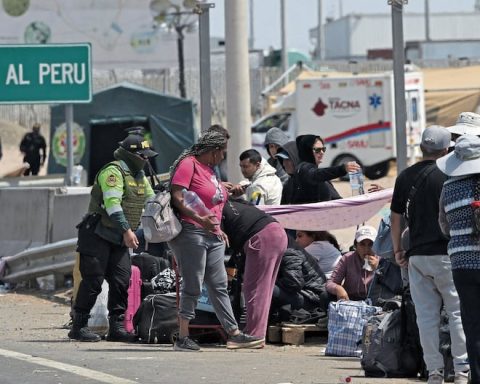AREQUIPA, Peru – When more than 24 hours have passed since the collapse of the national electrical system (SEN), in the province of Pinar del Río only about 9,000 customers have service.
This was revealed in the latest updates from the Castro press that cover the “reestablishment” of the SEN after a Friday day in which the entire Island was affected by a massive blackout.
The Cuban regime today plans to increase electricity generation with the entry into the system of thermoelectric plants, floating plants and engines, reported the Ministry of Energy and Mines (MINEM).
The portfolio specified in its account in X that the microsystems, established throughout the country, are currently contributing 370 megawatts and “fuels are available.”
According to the director of Electricity of the MINEM, Lázaro Guerra, in the west of the country the restoration of the SEN has already begun with the commissioning of the Santa Cruz thermoelectric plant and work is being done to link the Mariel plant.
In an appearance on national television, he explained that the Energás plant is in service and is serving a level of load in Havana and Mayabeque.
However, the official also explained this morning that although work is being done, “there is no certainty that the SEN will be able to unite in its entirety this day.”
Guerra explained that in the central region of the country the microsystem remains stable and added that the recent disconnections of the SEN were influenced by the availability of fuel, which contradicts the publications of his ministry on social networks.
According to official data, on October 18 in the central province of Villa Clara, located 278 kilometers east of Havana, service was gradually restored to 39% of the territory’s customers and “work is being done to maintain the vitality of basic services to the population such as health, food, communications, the water supply and the delivery of liquefied gas.”
Likewise, in the province of Las Tunas, the regime reported on the establishment of several microcircuits that help essential points of the economy and the main hospitals and water supply stations.
According to reports from the state site CubadebateIn Havana, there are 25 circuits scattered throughout different areas of the city that already have electricity, with 46.71 megawatts in operation, along with 12 substations in transmission, four engines generating in Regla, one in Naval and another in Tarará.
A crisis of darkness “with” precedents
This Friday, the MINEM reported on the social network
In this way, the entity confirmed the complaints on social networks that indicated a nationwide blackout that affected the Cubans throughout the day and night. The event has been reported in national and international media.
In May of this year, the Cuban ruler, Miguel Diaz-Canelsaid the country would experience “prolonged” power outages until June due to maintenance work on the energy system. This measure, according to the authorities, sought to reduce interruptions during the months of July and August, when consumption is highest.
“We are going to have extended maintenance until the month of June to minimize the annoyance of blackouts in the summer, especially in the months of July and August,” said Díaz-Canel in the sixth episode of his podcast. From the Presidency. The governor made it clear that the total absence of blackouts cannot be guaranteed: “We cannot commit to there being no blackouts. Due to the current conditions of the system, that commitment is not possible now,” he declared.
The blackouts, which exceeded a third of their impact in June, further complicate the country’s already tense energy situation. Before this weekend’s massive collapse, power outages affected all provinces, reaching more than 10 hours a day, even in Havanawhere “scheduled” blackouts are implemented by neighborhood, lasting approximately eight hours.
These blackouts not only deteriorate the economic performance of Cubawhich has been mired in a serious crisis for years, but has also been the trigger for anti-government protests. The most notable ones occurred on July 11, 2021the largest in decades, and most recently on March 17 in Santiago de Cuba and other locations.


















